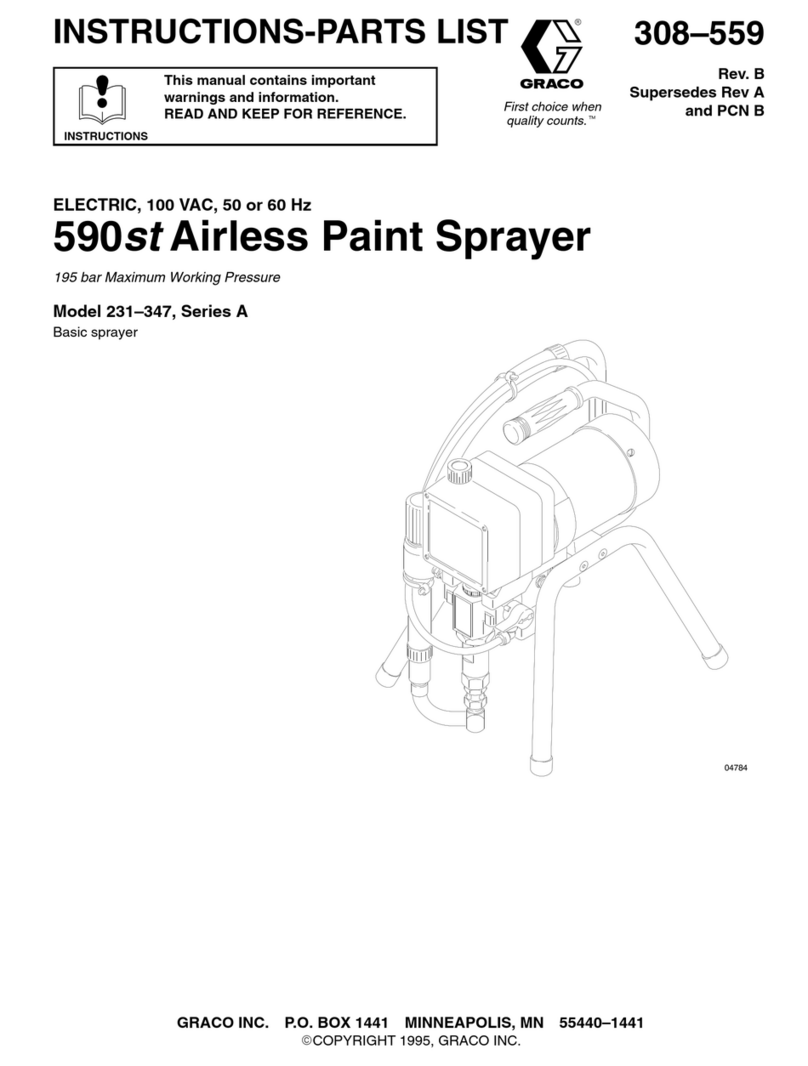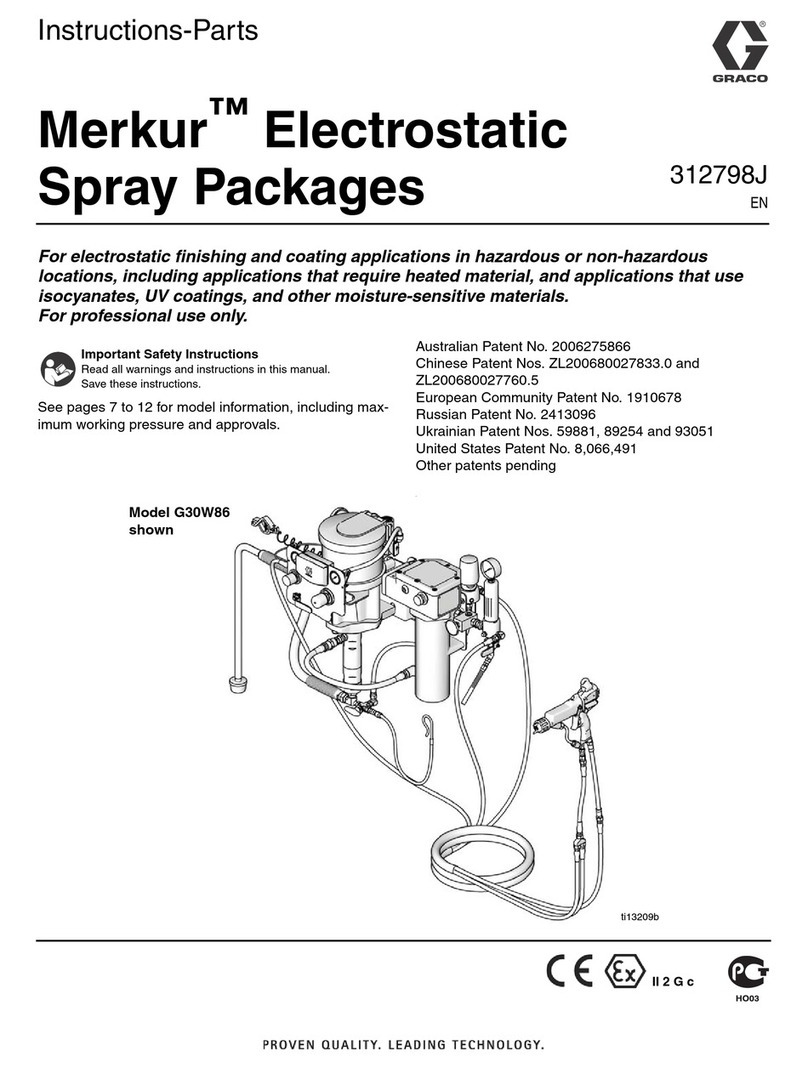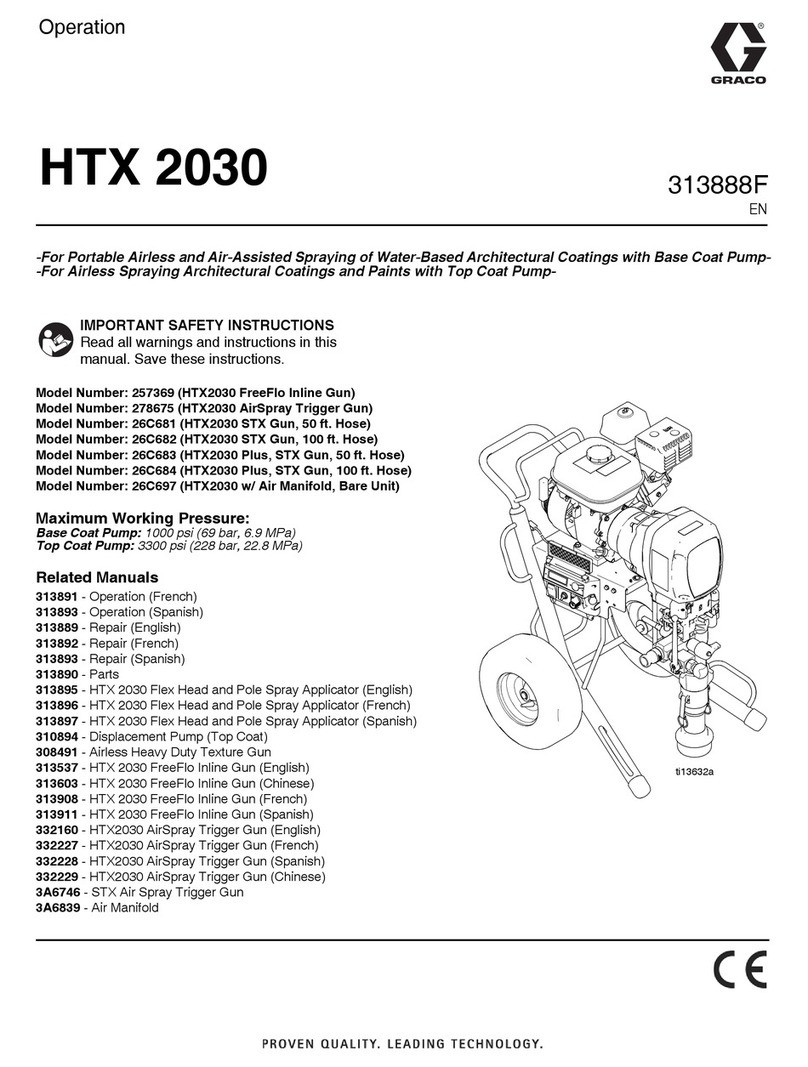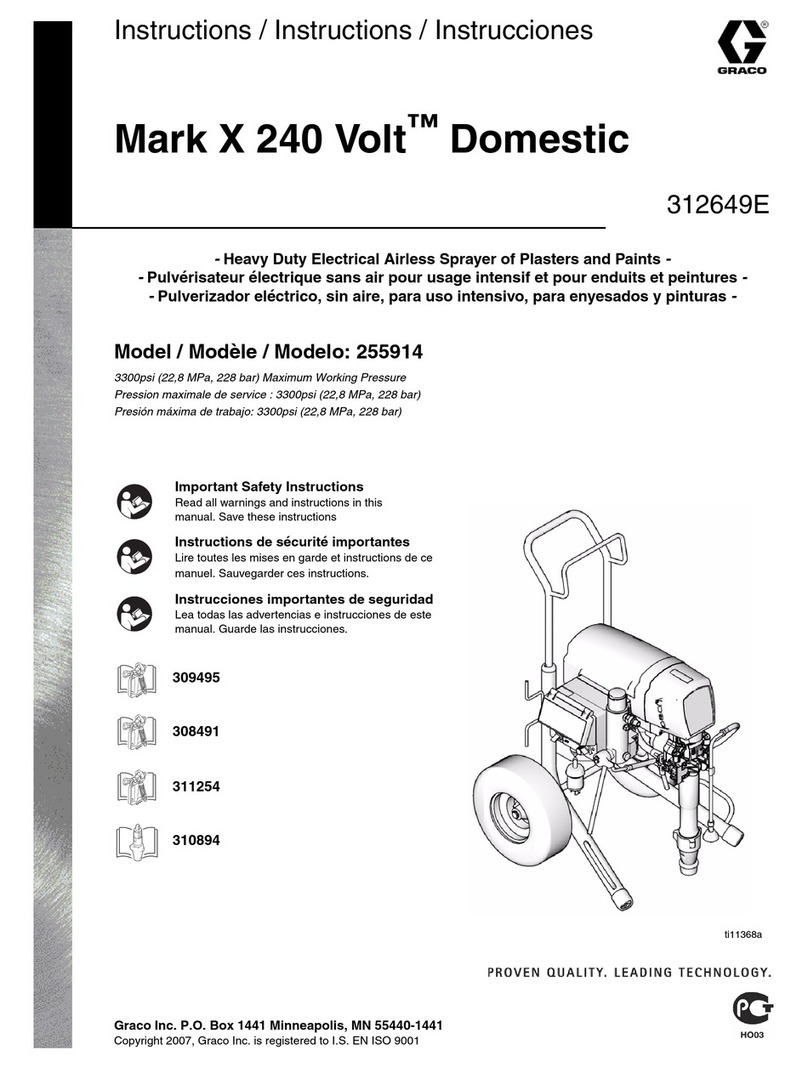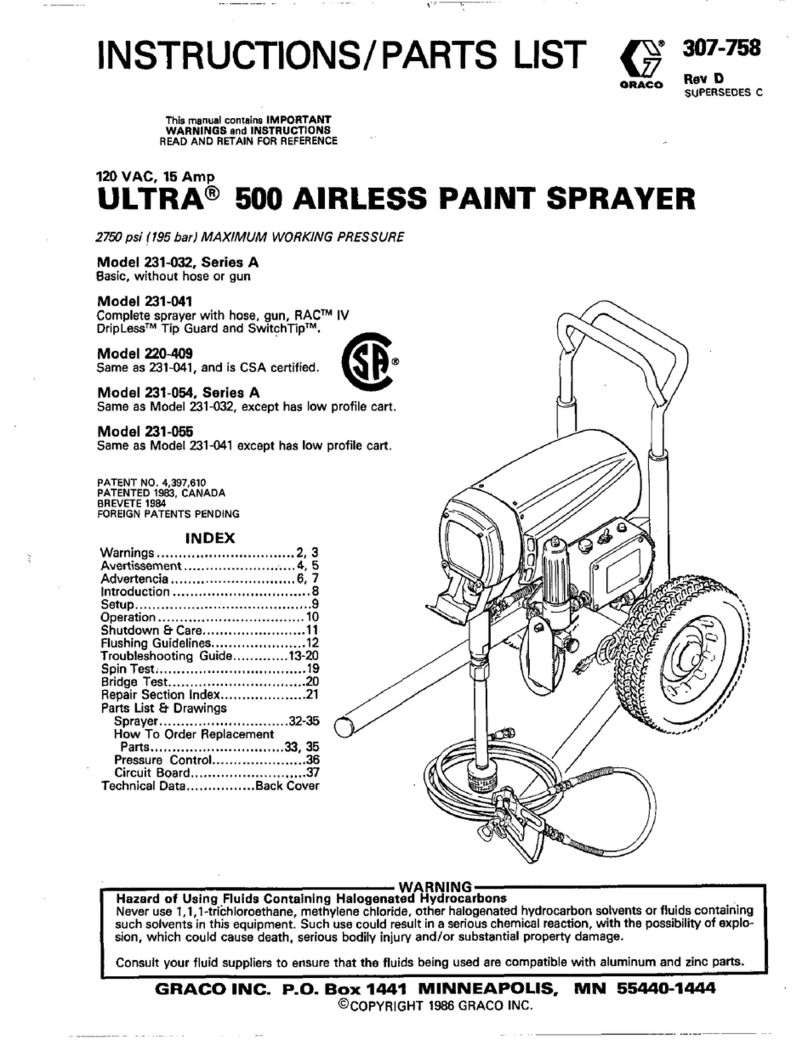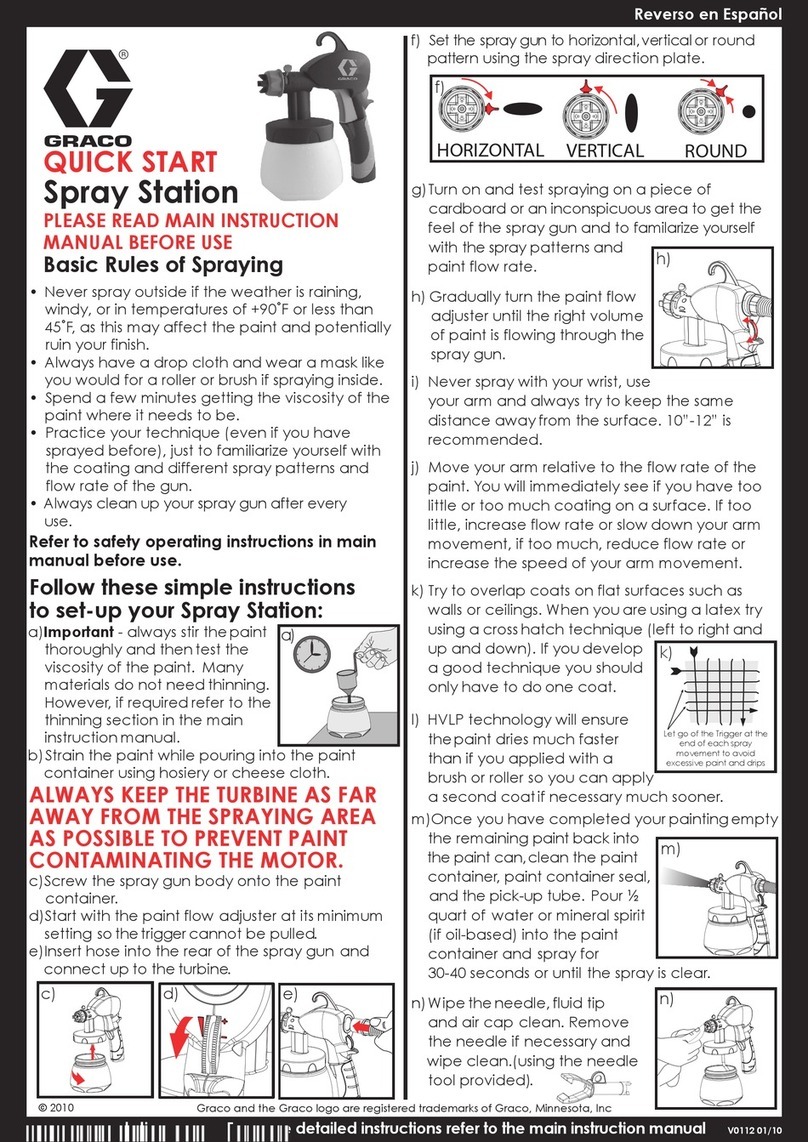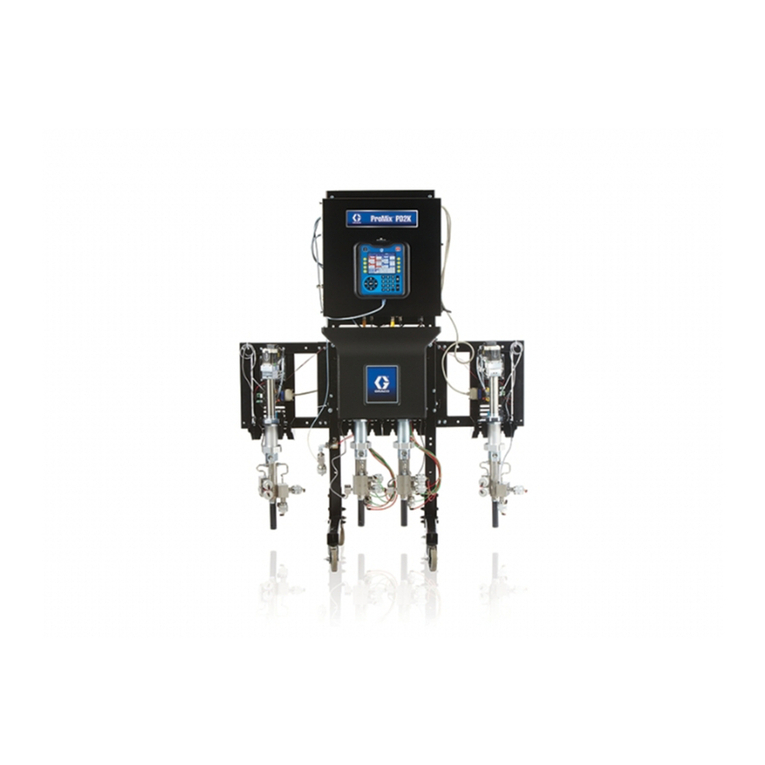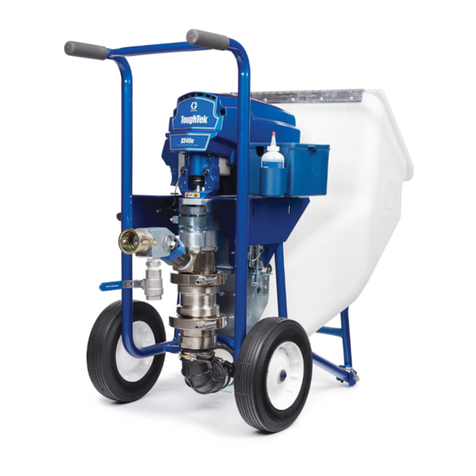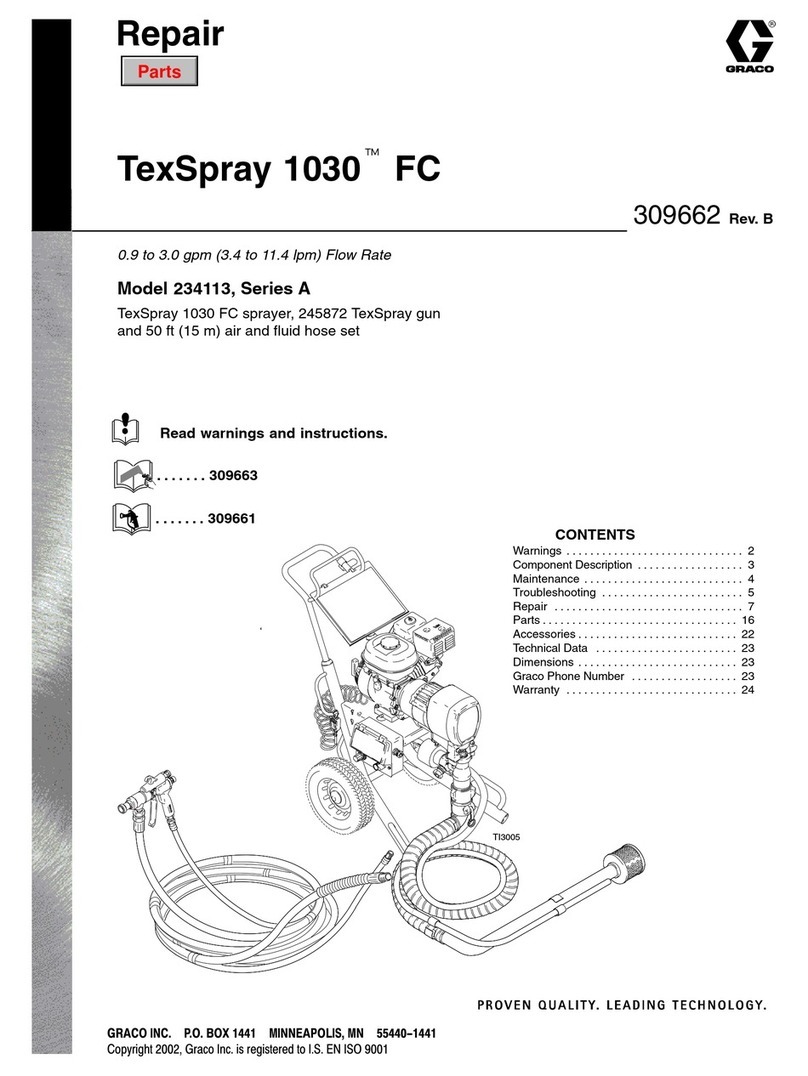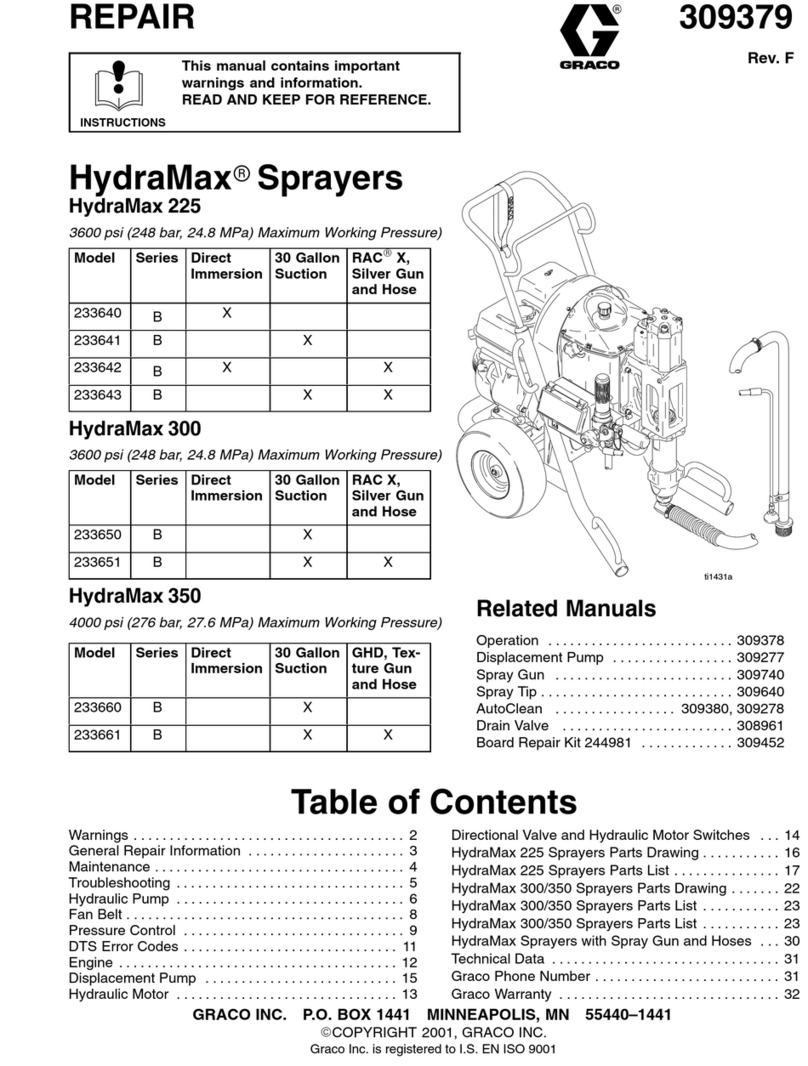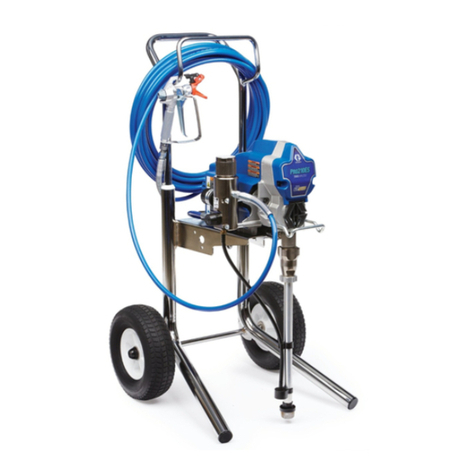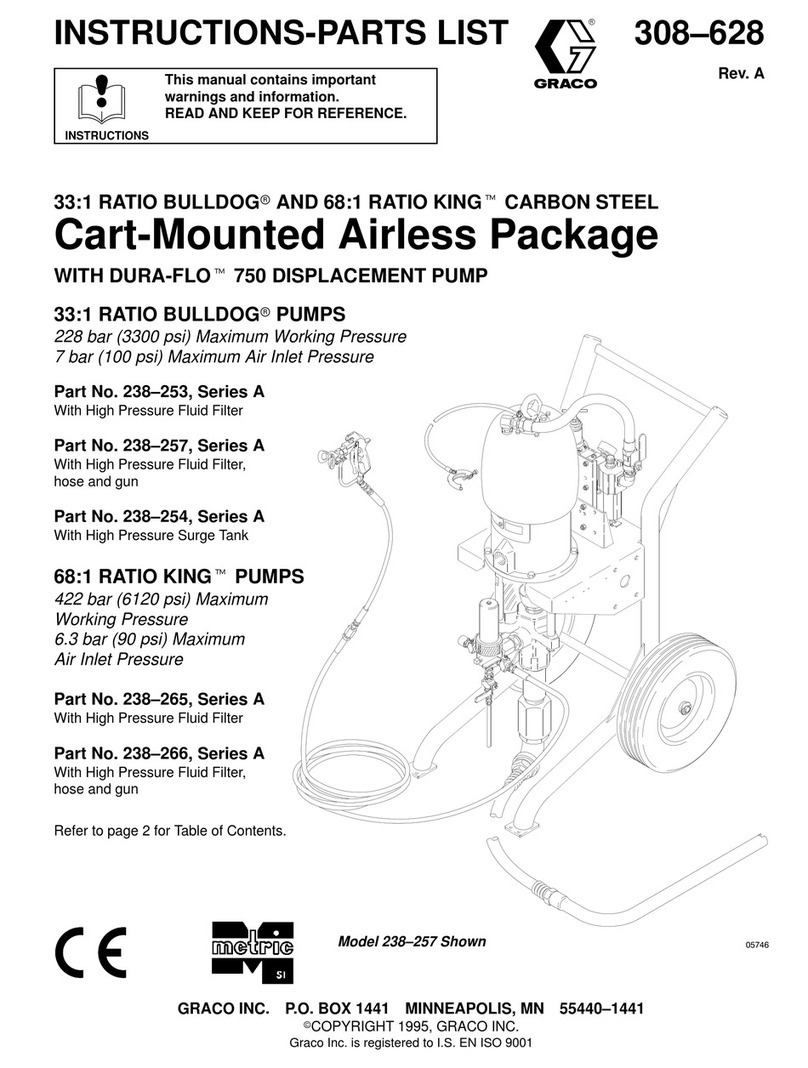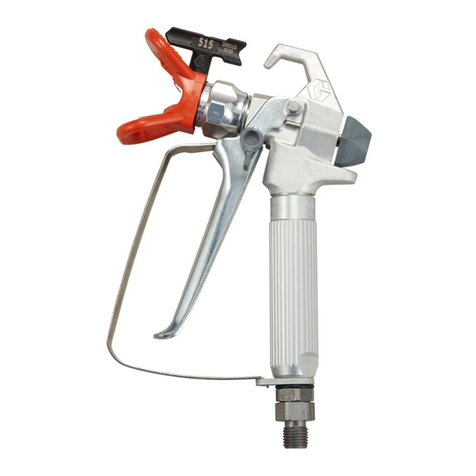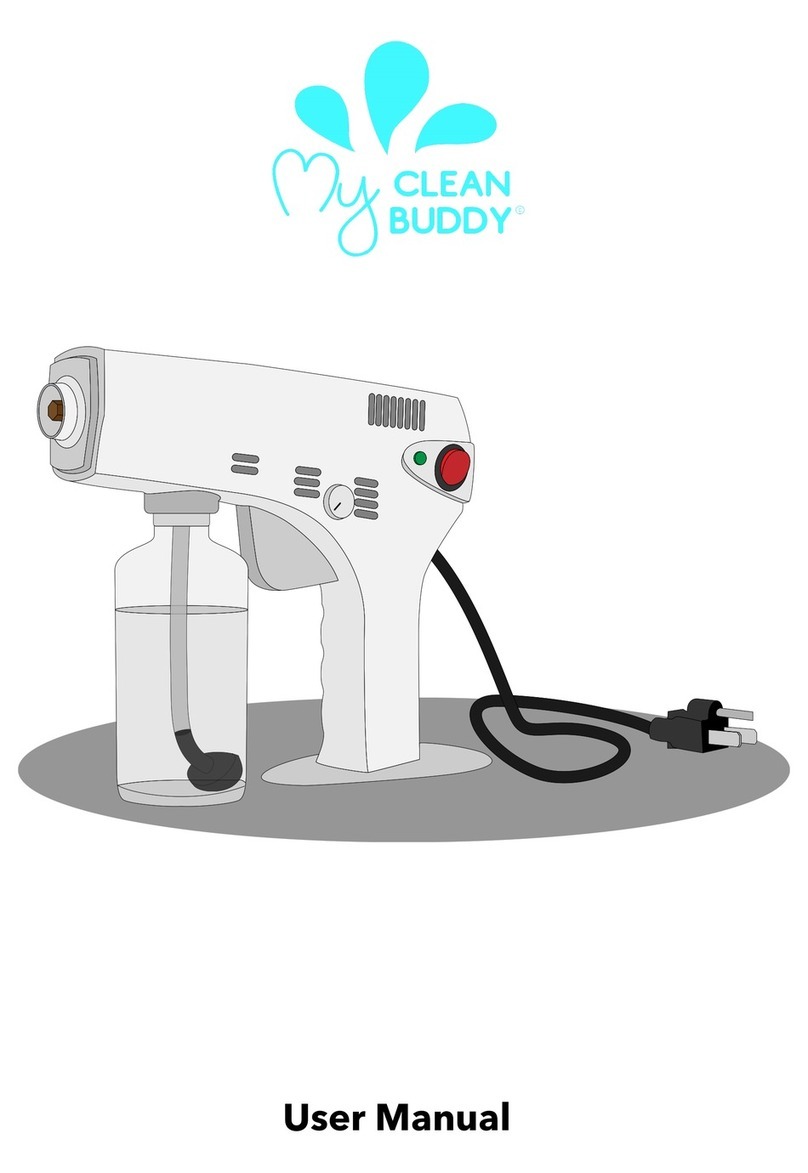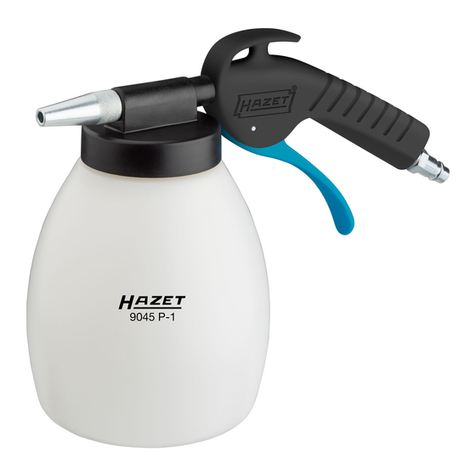
WARNING
HIGH
PRESSURE SPRAY CAN CAUSE SERIOUS INJURY.
FOR PROFESSIONAL
USE
ONLY. OBSERVE ALL WARNINGS.
Read
and
understand
all
instruction
manuals
before
operating
equipment.
FLUID INJECTION
HAZARD
This equipment generatesvery high fluid pressure. Spray from
General Safety
the gun, leaks or ruptured components can inject fluid
through your skin and into your body and cause extremely
serious bodily injury. including the
need
for amputation. Also,
fluid injected, or splashed into the eyes or onto the skin can
cause serious damage.
NEVER point the spray gun at anyone or
at
any pan of the
body. NEVER put hand or fingers over the spray tip. NEVER
try to "blow back" paint; this is NOT an air spray system.
ALWAYS follow the Pressure Rellef Procedure, below
before
cleaning
or
removing the spray tip
or
servicing any
system equipment.
NEVER try to stop
or
deflect leaks with your hand or body.
CHECK operation of
all
equipment safety devices before each
Use.
Medical Alert-Airless Spray Wounds
If any fluid appears to penetrate your skin, get EMERGENCY
MEDICAL CARE AT ONCE.
DO
NOT TREAT AS A SIM-
PLE CUT. Tell the doctor exactly what fluid was injected.
Note
to
Physician:
Injection in the skin
is
a
traumatic in-
jury.
It
Is
Important to treat the injury surgically as
soon
as posslble.
Do
not delay treatment to reasearch toxicity.
Toxicity is a concern with some exotic coatings injected
direct& into the blood stream. Consuhation with
a
plastic
surgeon or reconstructive hand surgeon
may
be
advisable.
Spray
Gun
Safety
Devlces
Be sure
all
gun safety devices are operating properly before
each
use.
Do
not remove or modify any part of the gun; this
can cause
a
malfunction and result in serious bodily injury.
Whenever you stop spraying, even for
a
moment, always set
Safety Latch
the gun safety latch in the closed or "safe" position, making
the gun inoperative. Failure to
set
the safety latch can result in
accidental triggering of the gun.
Diffuser
The
gun diffuser breaks up
spray
and reduces the risk of fluid
injection when the tip is
not
installed. Check diffuser operation
$,
then remove the apray tip. Aim
the
gun into
a
metal pail,
ulady.
Follow the Pressure Relief Procedure, to. the
holding the gun firmly to the pail. Using the
lowest
possible
to
an
irregular stream, replace the diffuser immediately.
pressure, trigger the gun. If the fluid emitted
is
not
diffused
ln-
ALWAYS haw the tip guard
in
place
on
the
spray gun while
Tip
Guard
spraying. The tip guard alerts
you
to
the fluid injection hazard
and helps
reduce,
but does
not
prevent, the risk of acciden-
tally placing your fingers
or
any
part
of your bcdy
dm
to the
spray
tip.
T~gger
Guard
guard
helps
prevent
the
gun from triggering accidentally if is
Never
operata
the
gun with the trigger guard removed. This
dropped
or
bumped.
Spray
Tip
Safety
Use extreme caution when cleaning
or
changing spray tips. If
the spray tip clogs while spraying, engage the gun safety latch
immediately. ALWAYS follow the Pressure Relief. Pro-
cedure, below, and then remove the spray tip to clean
it.
fully relieved and the gun safety latch is engaged.
NEVER wipe
off
build up around the spray tip until pressure is
To reduce the risk of serious bodily injury, including fluid injec-
Pressure Relief Procedure
tion, splashing in the eyes or onto the skin, or injury from mov-
ing pans, always follow this procedure whenever you shut
off
the pump, when checking or servicing any part of the spray
system, when installing, cleaning or changing spray tips, and
whenever you stop spraying.
2.
Shut
off
the air to the pump.
1.
Engage the gun safety latch.
3.
Close the bleed-type master air valve (required in your
..
system).
and trigger the gun to relieve pressure.
4.
Disengage the gun safety latch.
5.
Hold
a
metal part of gun firmly to the side of a metal pail,
6.
Engage the gun safety latch.
7.
Open the drain valve; triggering the gun to relieve pressure
drainage.
may not be sufficient. Have
a
container ready to catch the
8.
Leaye the drain valve open until you are ready to spray
agaln.
If
you
suspect that the spray tip or hose
is
complete& clogged,
or that pressure
has
not been fully relieved eftar following the
steps above,
VERY SLOWLY loosen the air cap or hose end
coupling and relleva pressure gradually, then loosen complete-
ly. Now clear the tip or hose.
EQUIPMENT MISUSE
HAZARD
Any misuse of the spray equipment or accessories, such as
General Safety
overpressurizin modifying pans, using incompatible
chemicals and {ids, or using worn or damaged parts, can
cause them to rupture and result in fluid injection
or
other
serious bodily injury, fire, explosion or propeny damage.
NEVER alter
or
modify any pan of this equipment; doing
so
could cause
it
to malfunction.
CHECK
all
spray equipment regularly and repair
or
replace
worn or damaged parts immediately.
Read and follow the fluid and solvent manufacturer's literature
regarding the use of protective clothing and equipment.
.)
.yn"(KI
System Pressure
Refer to the Technical Data
on
page
12
for specific fluid and air
working pressure.
NEVER
exceed the maximum fluid
or
air
working pressure. Be sure that
all
spray equipment and ac-
cessories are rated to withstand the maximum working
pressure of this sprayer.
DO
NOT exceed the maximum work-
ing pressure of any component
or
accessory used in the
system.
BE
SURE that
all
flulds and solvents used are chemically com-
Fluid Compatibility
Datible with the wetted
Darts
shown in the Technical Data in
the separate pump manual. Always read the fluid and solvent
manufacturer's literature before using them in this sprayer.
